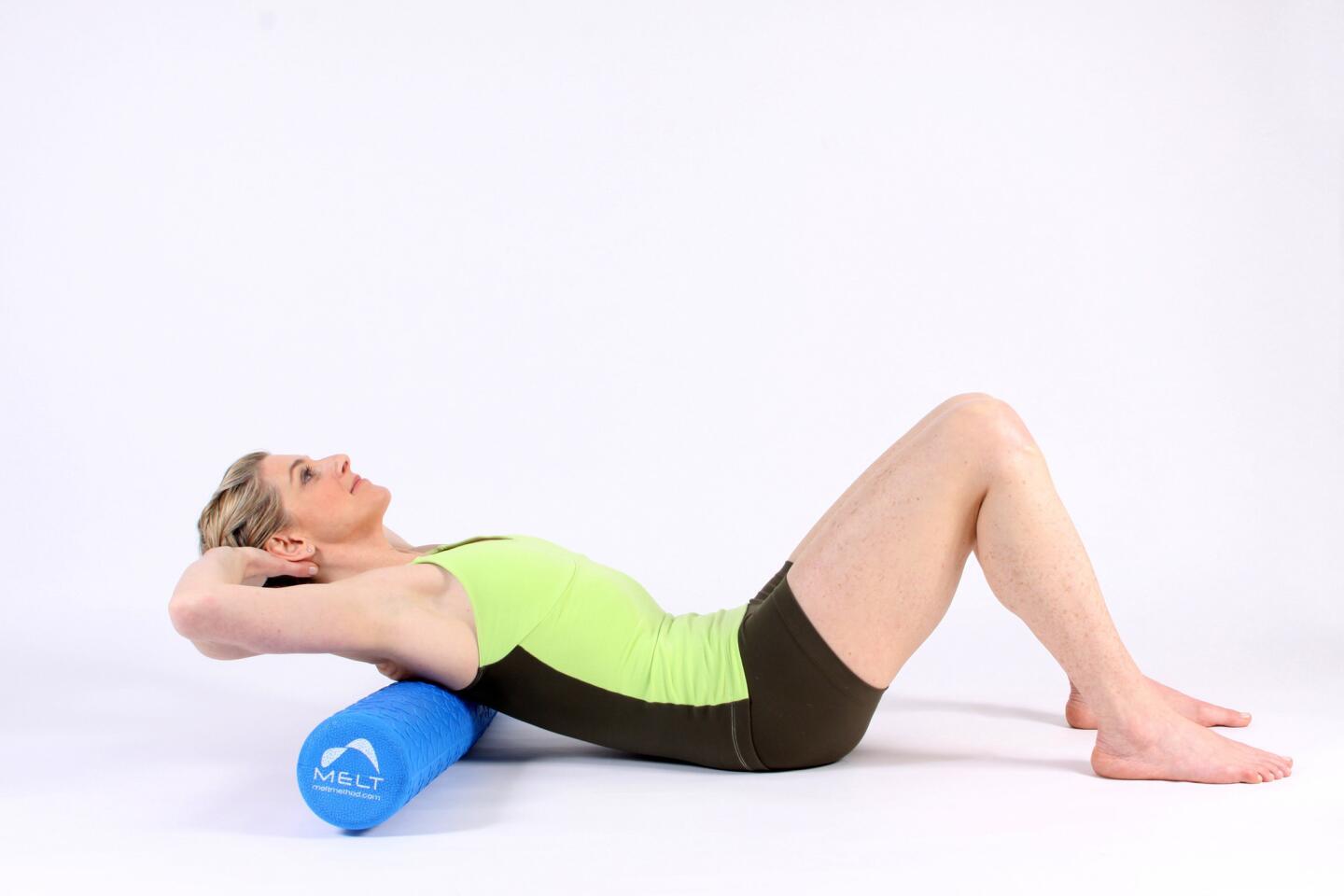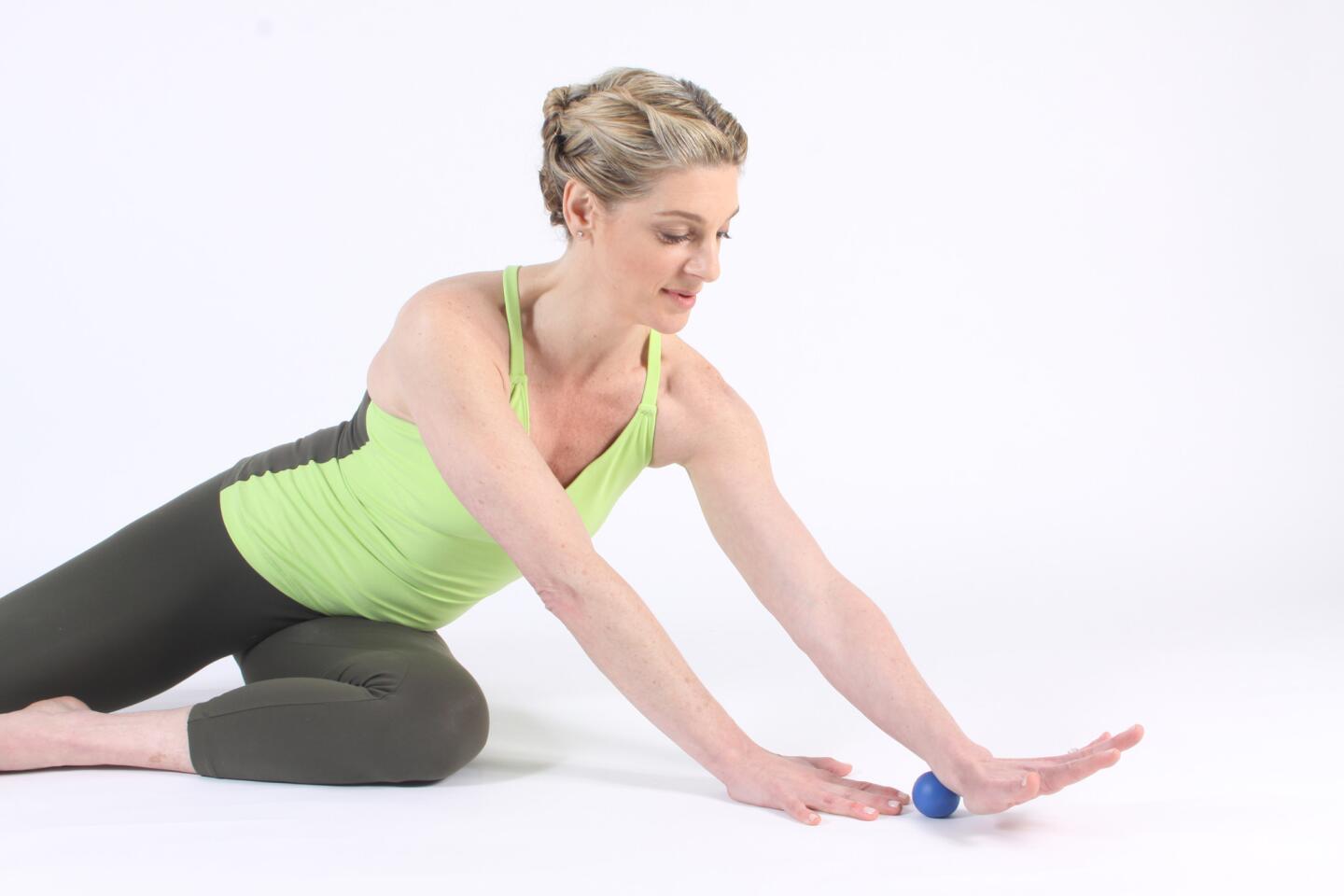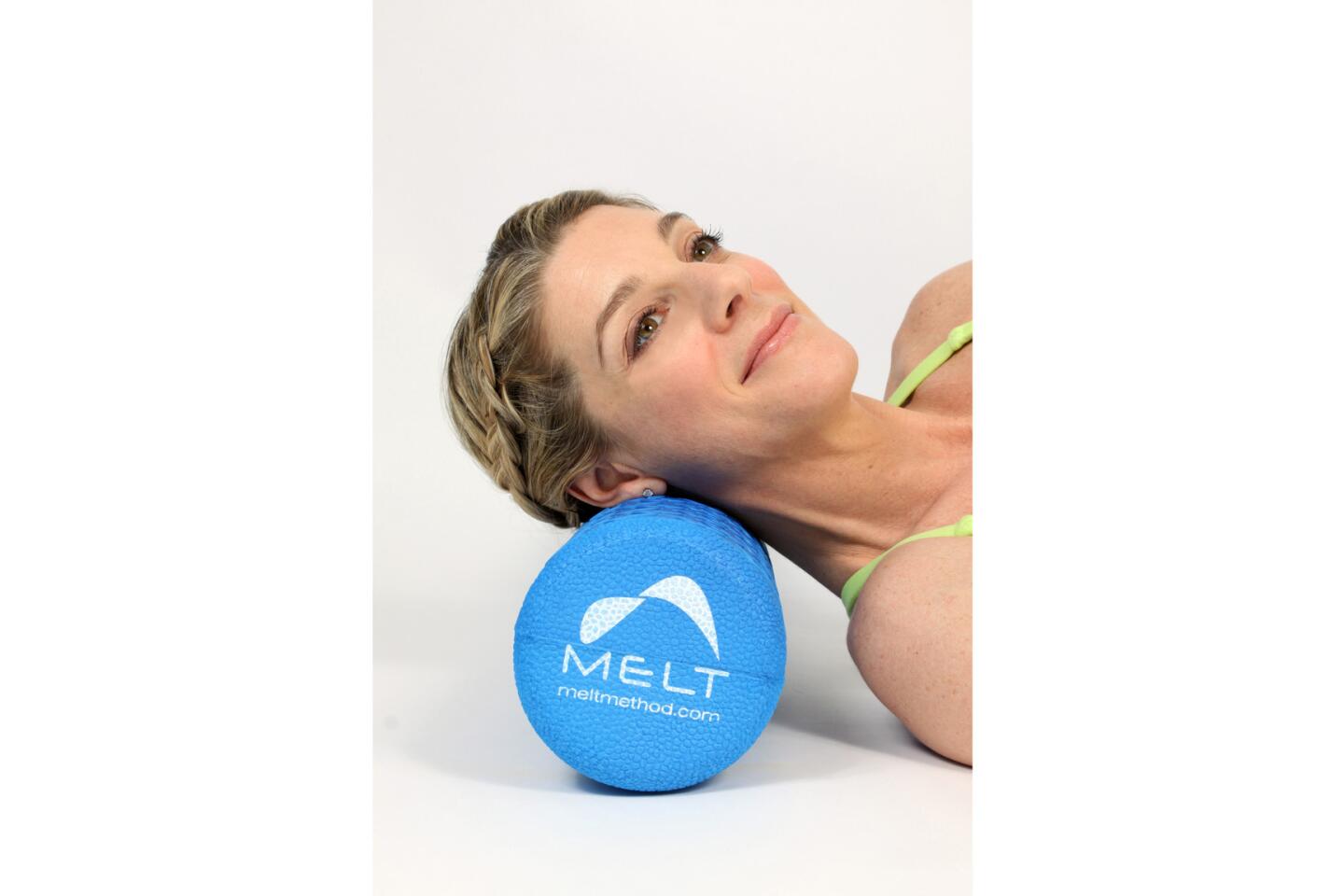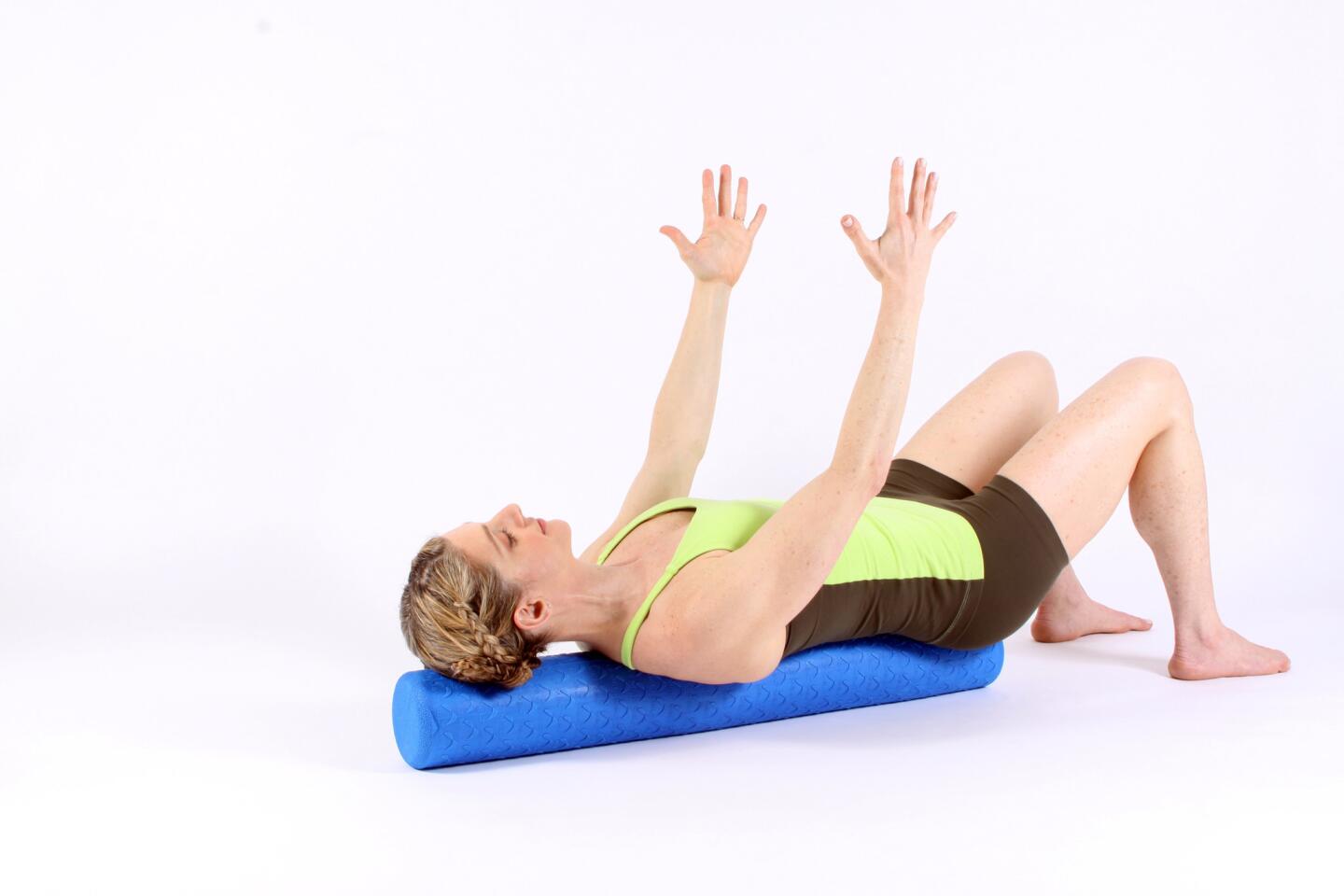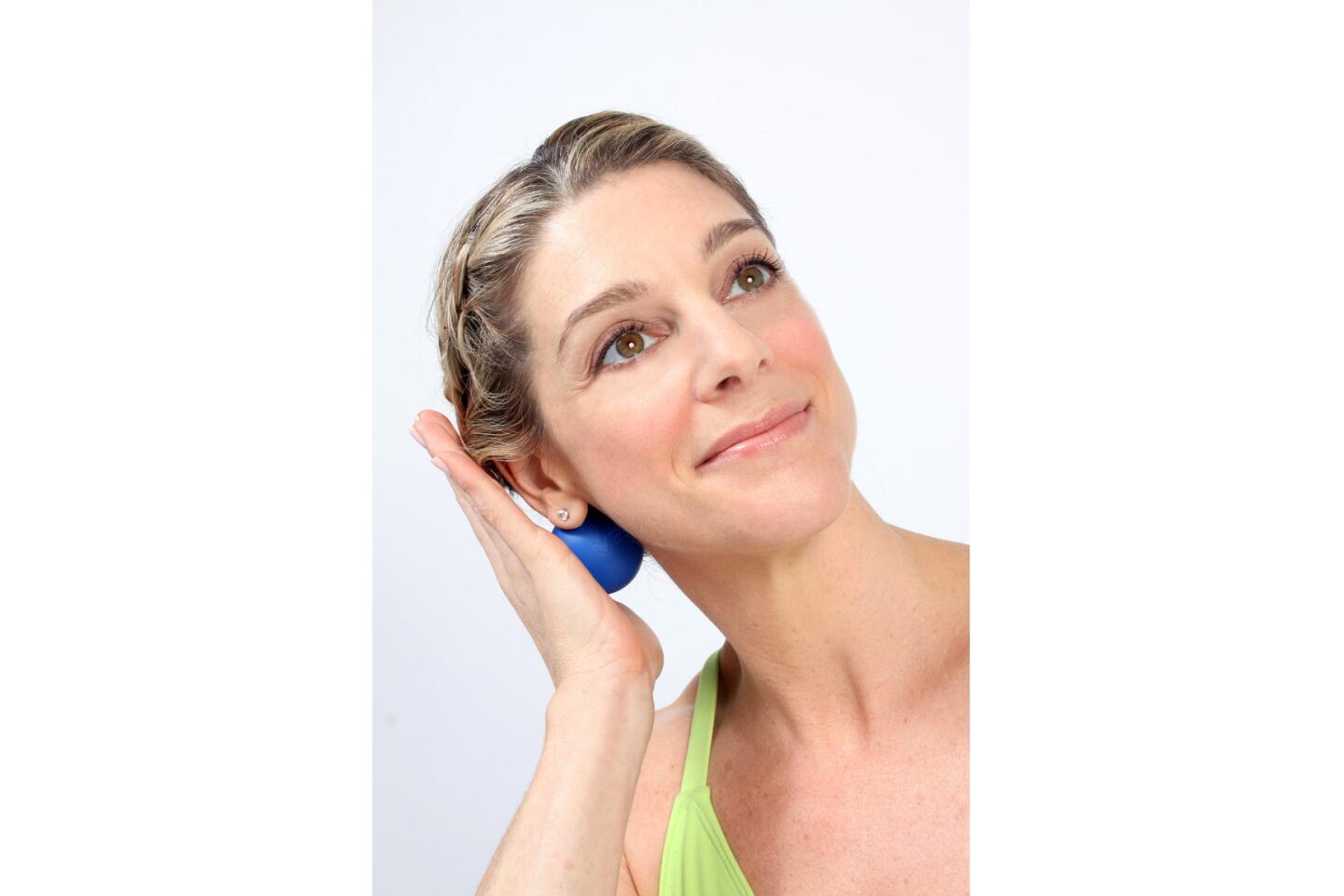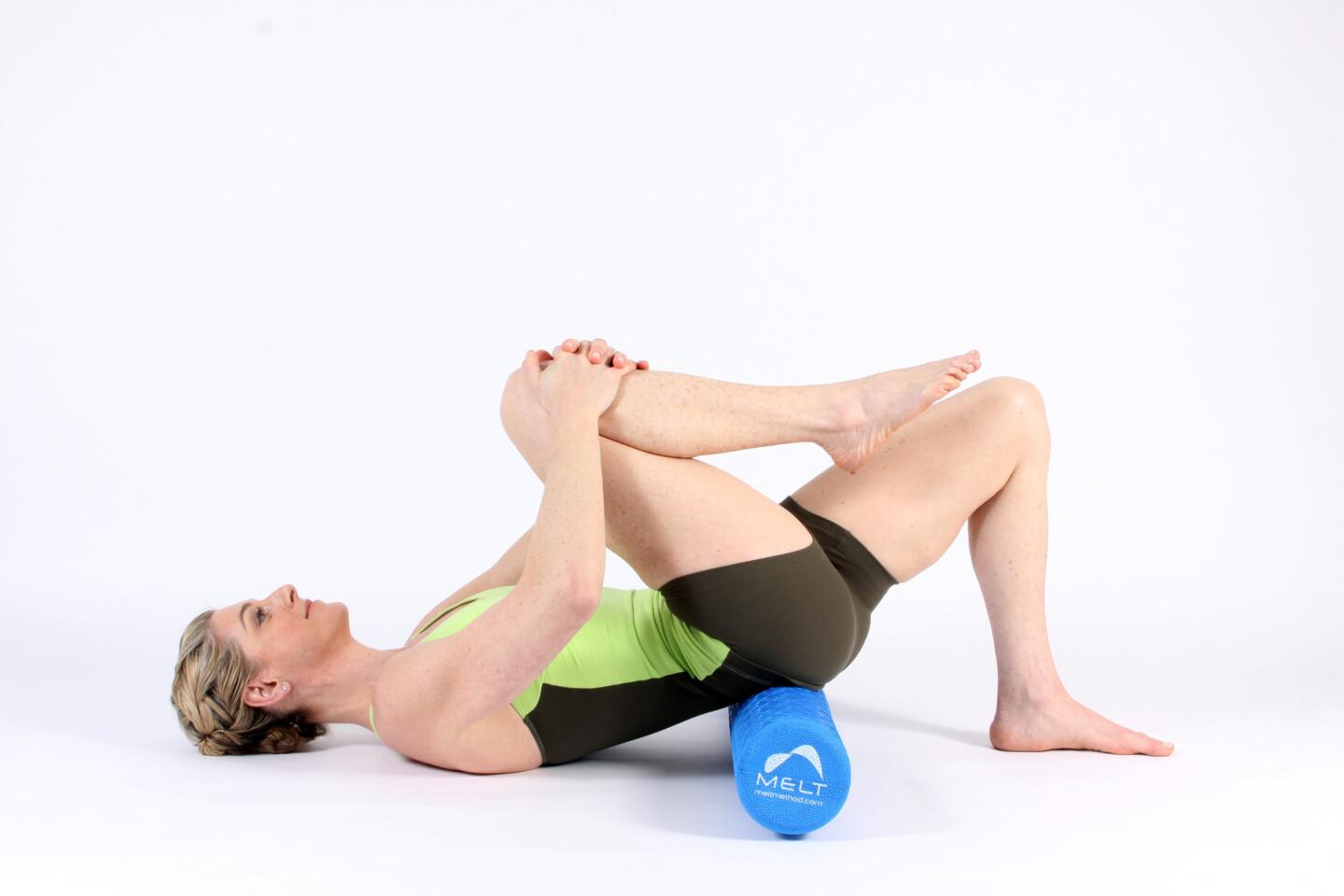It doesnât have to hurt: How to use soft rollers and balls to gently melt away aches and pains
All sorts of fitness buffs have taken to using foam rollers on backs and arms and legs, but itâs often a no-pain, no-gain venture. That made no sense to the developer of a gentler way to self-massage muscles and other troublesome areas of the body.
âIf you are in pain, why would you cause pain to reduce it?â asks Sue Hitzmann, the New York City connective tissue specialist who developed the MELT Method, which uses balls and soft rollers to treat connective tissue and the nervous system.
The idea behind using rollers â hard or soft â is that by running body parts over a cylinder you provide self-massage and stretching, says orthopedic surgeon Sabrina Strickland, a spokeswoman for the American Academy of Orthopaedic Surgeons. But using a hard roller, or a lacrosse ball, which also is common, means âyouâre starting at 10. Youâre not easing into it at all,â she says. So the idea of MELTâs softer equipment makes sense.
Hitzmann says the forceful work of hard rollers is not necessary to do what she calls ârehydratingâ connective tissue. Think of that tissue like a sponge, she says. When itâs dry, itâs stiff and inflexible; wet, itâs soft, more elastic and easily manipulated.
Strickland says she knows of nothing to support that theory. But she says that rolling does massage and can increase circulation to the spot on the body where the roller is applied, which can provide relief and, done regularly, keep problems at bay.
Hitzmann, a well-known fitness instructor, created her Myofascial Energetic Length Technique in response to clients with chronic pain and to deal with her own injuries. What Hitzmann calls âstuck stressâ can result from running marathons or sitting at a desk and can slow the bodyâs healing process. Left alone, that can lead eventually to back pain, headaches and injury. Her technique, she says, directly treats that stuck stress.
Kris Haley, who teaches the MELT Method in Los Angeles, says she spent 18 years in pain and just accepted it as a part of the aging process. More than two years ago, she made a ânon-negotiable decisionâ to get out of pain. MELT worked for her. She recommends using the method at least three times a week, at least 10 minutes at a time.
At an introductory workshop, Haley demonstrated how to move the hands, feet, neck and other body parts in precise ways over small balls and soft foam rollers. Itâs a relaxing exercise and felt great while I did it, but I didnât go to the workshop with any specific problems.
Hitzmann is an exercise physiologist and has written a bestselling book about MELT; the program is also on CD and taught by more than 1,200 instructors across the country.
Twitter: @mmacvean
ALSO:
Are you a nail biter? A hair twister? Or always late? 4 tips for breaking bad habits
The gym comes to you with the rolling L.A. workout studio G.I.T. Fit
For former professional drummer Robin Russell, no gig tops Griffith Park
